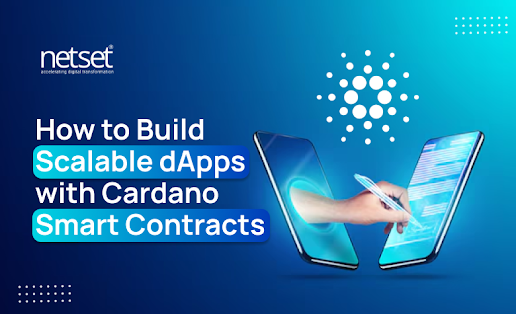In the ever-growing mobile gaming market, Android remains the dominant platform, with millions of users worldwide. Whether you're a budding entrepreneur or a curious beginner, learning how to make a game app for Android can be both exciting and rewarding. With the right tools and guidance, you don’t need to be a seasoned coder to launch a successful game.
This step-by-step guide breaks down everything you need to know from planning your idea to hiring experts and publishing your game.
Step 1: Define Your Game Concept
Before diving into development, you need a strong and clear game concept. Start by asking yourself:
-
What type of game do I want to build? (Puzzle, Action, Arcade, Strategy, etc.)
-
Who is my target audience?
-
What will make my game stand out?
Sketch out rough visuals and describe your game mechanics, levels, rewards, and user journey. A clear vision helps streamline your android game design process and reduces confusion during development.
Step 2: Choose the Right Game Engine
To build a game for Android, you need a game engine, a platform that lets you design, develop, and test your game with ease. Popular choices include:
-
Unity: Ideal for both 2D and 3D games. It supports C# programming and offers a wide library of assets.
-
Unreal Engine: Known for stunning graphics and performance-heavy games. Uses C++.
-
Godot: A great open-source alternative for simple 2D and 3D games.
-
Buildbox: Perfect for beginners—no coding required.
Each game engine comes with its pros and cons. Evaluate based on your technical expertise, game requirements, and budget.
Step 3: Start with Android Game Design
Once you've chosen your game engine, begin working on the android game design. This includes:
-
Graphics & Animation: Design characters, backgrounds, objects, and UI elements.
-
Sound Effects & Music: Good audio improves the gaming experience and keeps users engaged.
-
User Interface (UI): Make sure your buttons, menus, and navigation are intuitive.
If you're not a designer, consider hiring a mobile app development company in USA with experience in gaming apps. Professional designers can bring your ideas to life and optimize your game for Android screens.
Step 4: Develop the Game Logic
This is where your game starts taking shape. You’ll need to:
-
Write scripts for movements, controls, and interactions.
-
Implement features like scoring, level progression, ads, and in-app purchases.
-
Optimize performance for different Android devices.
If coding feels overwhelming, you can hire android expert or mobile app developers in USA who specialize in developing Android games. Outsourcing this phase can save time and help avoid common mistakes.
Step 5: Test Your Game Thoroughly
Never release a game without testing. QA testing helps identify bugs, glitches, or compatibility issues that might affect user experience. Test your game on various Android devices, screen sizes, and OS versions.
Testing should cover:
-
Game stability and crash reports
-
Touch controls and responsiveness
-
Graphics performance
-
Audio syncing and volume controls
You can use tools like Firebase Test Lab or involve beta testers to collect feedback before launch.
Step 6: Prepare for Play Store Submission
Before publishing your Android game, you need to:
-
Create a Developer Account on the Google Play Console (a one-time fee of $25).
-
Prepare game assets such as the app icon, promotional banners, and screenshots.
Set pricing, regions, and age ratings.
Once submitted, your game goes through Google’s review process. If approved, it will be live on the Play Store!
Step 7: Promote and Monetize Your Game
Launching your game is just the beginning. Now, focus on getting downloads and earning revenue.
Marketing tips:
-
Create a website or landing page for your game.
-
Run ads on Google, Facebook, and gaming forums.
-
Partner with influencers or gaming YouTubers.
-
Encourage user reviews and ratings.
Monetization strategies:
-
In-app ads (rewarded videos, banners, interstitials)
-
In-app purchases (extra lives, premium characters)
-
Paid version of the game
Why Hire Android Experts for Your Game App?
While it’s possible to build simple games yourself, developing advanced games often requires technical skills and creative expertise. When you hire Android expert, you gain access to:
-
Experienced game developers
-
UI/UX designers for immersive gameplay
-
Sound engineers and animators
-
QA testers and support teams
This not only speeds up development but ensures a professional, bug-free product that meets market standards.
Working with trusted mobile app developers in USA gives you a competitive edge, especially if you’re targeting global users.
Final Thoughts
Creating an Android game app is no longer limited to large studios. With the right tools, talent, and vision, even solo creators and startups can build hit games.
From ideation to launch, this guide has walked you through each essential step. Whether you’re DIY-ing it or choosing to partner with a mobile app development company in USA, success lies in planning well, staying user-focused, and optimizing at every stage.
At NetSet Software, we specialize in building engaging, high-performance Android game apps tailored to your vision. Whether you want to hire Android experts or need end-to-end development support, our team is here to help you turn your game idea into a winning product.
So go ahead—bring your game idea to life and let the Android gaming world see what you’ve got!





